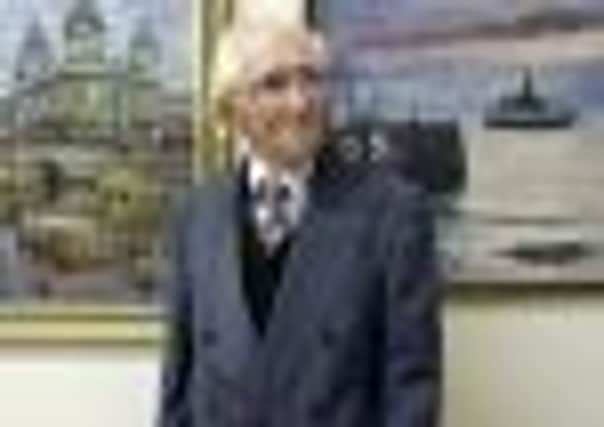James Neal


It began during the war when he served with units which were posted to the region, and a number of his drawings from this period, many of which are portraits, are in the Beverley Art Gallery.
His later paintings preserve a Hull that no longer exists – many of the buildings have been demolished, the drains grassed over or tarmacked – and in doing so provide a highly personal record of a relatively recent past with few surviving traces.
Advertisement
Hide AdAdvertisement
Hide AdHis work highlights unusual views and conveys atmosphere via exceptionally assured drawing and colouring skills.
The elder of two boys, from early childhood Mr Neal showed a talent for art, singing and acting, this last being encouraged by his aunt Elsie, one of the dancing Tiller Girls.
His singing took him to Broadcasting House in the early 1930s to sing Danny Boy in an experimental, first televised broadcast in London.
His acting took him to the Italia Conti School of Theatre Arts and he had a brief career as a child actor, appearing in the first production of JB Priestley’s The Good Companions at His Majesty’s Theatre in 1931, and being coached by AA Milne for a part in Toad of Toad Hall at the Savoy Theatre.
Advertisement
Hide AdAdvertisement
Hide AdHe was earning more than his father, but while the stage held out the promise of a successful career, he gave it up for art, and at 14 went to St Martin’s School of Art where he was taught by Leon Underwood, who also taught Henry Moore.
Mr Neal spent a further four years studying at the Royal College of Art, where his teachers included Gilbert Spencer, Barnett Freedman and the Yorkshireman Vivian Pitchforth.
During this time at the RCA, he won the Spencer Prize and dined with Stanley Spencer. At his diploma show in 1940 he exhibited a painting of his mother, Woman Resting, which now hangs in the Ferens Art Gallery, Hull. This painting was part of a 1989 exhibition at Leeds City Art Gallery, Images of Women. After the war, he met Doreen Barnes through a mutual friend and they were married in 1948.
He did book illustrations and taught part time at Willesden and Hornsey art schools before getting a full-time teaching job at the London School of Printing.
Advertisement
Hide AdAdvertisement
Hide AdIn 1958, he renewed his acquaintance with Hull and East Yorkshire when he was appointed Lecturer in Painting and Drawing at the Hull Regional College of Art.
When his former teacher, Vivian Pitchforth, heard the news, he told him: “You’ll enjoy Hull – the docks and the shipping.”
This subject matter is perhaps under-represented in the artist’s subsequent output, but Number 7, a painting of a now demolished warehouse on Princes Dock, is also in the Ferens permanent collection.
After 1958, Mr Neal was a regular exhibitor at the Ferens and Beverley Art Galleries as well as at galleries further afield. Forty of his paintings had been exhibited at the Royal Academy by 1986, and several galleries and public collections include his work, including Shipley, Leeds and Sheffield art galleries.
Advertisement
Hide AdAdvertisement
Hide AdW.T. Oliver, the then distinguished art critic of the Yorkshire Post, wrote in 1965 that Mr Neal “learned something from Lowry, finding significance in the meagre pattern of suburban house fronts”.
He went on to note his “special contribution to the art of the region through his ability to portray the character of the city’s streets and surrounding country, with the River Hull and its barges and those placid channels (known as drains).
“Hull, despite what the German bombers did to it, remains a handsome city, and James Neal has caught on canvas the fascination of its rooftops and the touch of Venetian grandeur in its domes....Hull has every reason to be grateful to this Londoner in its midst.”
As well as teaching at the Regional College and then (in history of art) in the Faculty of Art and Design at Hull’s College of Higher Education, for many years Mr Neal was an art critic for the Yorkshire Post.
Advertisement
Hide AdAdvertisement
Hide AdHe also gave lectures for Adult Education and Workers’ Education Association schemes, and co-ordinated exhibitions to promote the work of local artists in Hull and the East Riding.
His interest in Hull’s artists extended also to those long dead. In 1966 he played a prominent part in having the gravestone of one of Hull’s greatest marine artists, John Ward, moved from its obscure position in Old Churchyard, Mytongate, to Trinity House.
His wife Doreen died in 2007, and he is survived by their children Sarah, Jonathan and Sebastian, five grandchildren and one great-grandchild.